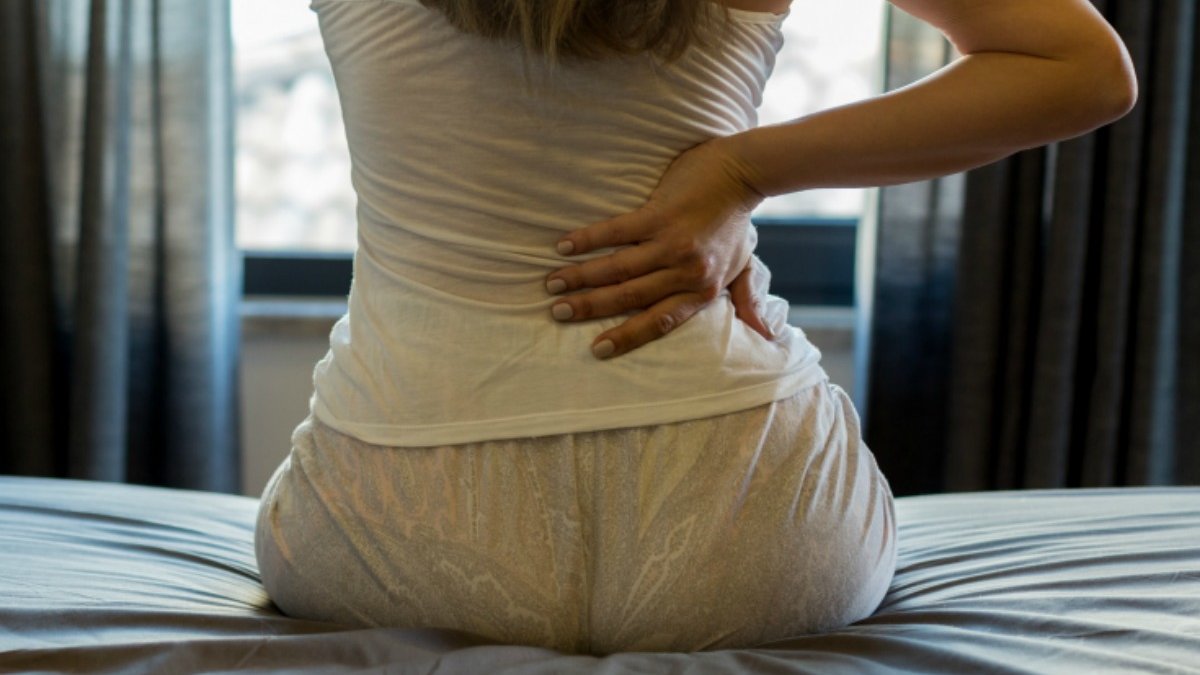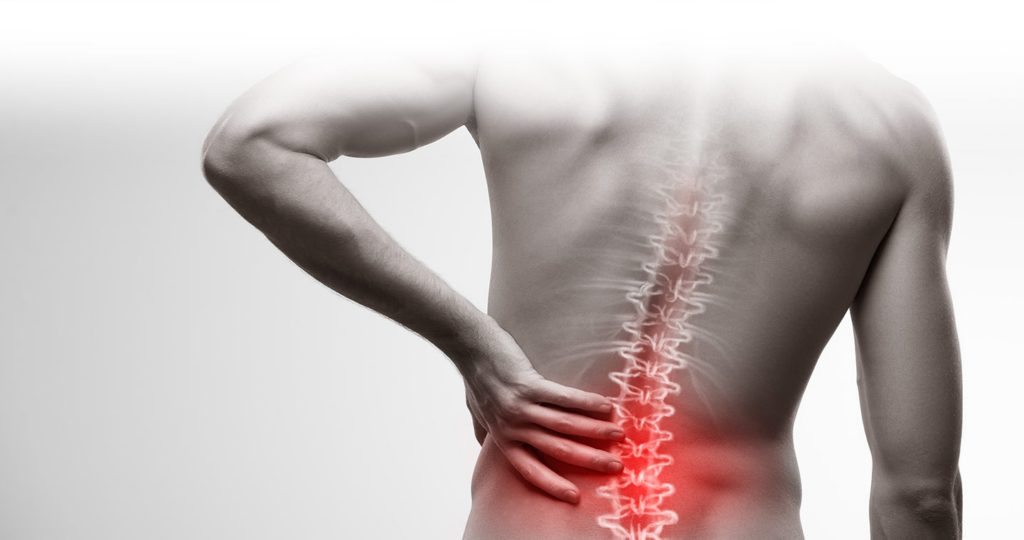
Women are at a higher risk for acquiring a variety of back pain and associated problems. Also, women are more vulnerable to developing long-term chronic back pain. Pain, numbness, or tingling in the lumbar region? That would be this medical illustration with the area marked in red.
It’s important to rule out all possible causes of lower back pain before treating it, and the lumbar spine is a prime suspect. You should check out Signs, Evaluation, and Care for Low Back Pain.
There are a number of medical issues that predominantly affect women (and sometimes only them). After menopause, women are more likely to experience issues with back pain (above 50 years). What follows is some information regarding the most frequent reasons why women experience back pain.
In this article, you will learn ways of managing chronic pain, understand pain signals, and their implications for mental health — not exclusively about using nonsteroidal anti inflammatory drugs, but also with relaxation techniques, and other natural pain medicines.

Osteoarthritis of the spine
Facet joint osteoarthritis, which results from repeated motion, is especially prevalent in women. Getting older and/or gaining a lot of weight increases the danger.
The facet joints in the spine deteriorate due to osteoarthritis. Without cartilage to act as a shock absorber, the bones in your body might potentially rub together, causing considerable pain. Chronic Pain in the lower back, groyne, buttocks, and thighs is a common symptom of osteoarthritis of the spine.
Morning back pain and stiffness; sporadic, excruciating pain attacks. The chronic pain might be localised to one area of the back, worsen in response to pressure from the outside world, and feel better while bending forwards from the waist.
Syndrome of the piriformis muscle
You have piriformis syndrome if you experience pain in the buttocks that originates in the piriformis muscle. Hormonal and foetal changes in the pelvis disproportionately impact females.
Pain in the piriformis region might seem like sciatica because the piriformis muscle irritates or presses on the sciatic nerve. Pain in the buttocks and groyne that is exacerbated by bending at the hips may be the result of piriformis syndrome.
You wake up in agony; you can’t sit for lengthy periods of time; you get radiating pain down the back of your thigh and leg.
Lying on one’s back tends to alleviate the pain.

Problems with the sacroiliac joints
The sacroiliac (SI) joint is the hinge between the base of your spine and your pelvis, and dysfunction or inflammation of this joint can cause significant pain. Pain in the lower back is a frequent symptom of SI joint dysfunction.
Because the SI joint surface area is often smaller in women than in males, more of the joint’s stresses are concentrated in a smaller region. Women are more likely to experience SI joint issues due to their broader, more irregular, less curved, and more posteriorly inclined sacrum.
Misalignment of the sacroiliac (SI) joints is more common in younger women due to these and other anatomical abnormalities. Symptoms similar to sciatica can be brought on by SI joint dysfunction as well. Symptoms typically worsen while sitting, lying on the affected side, and/or climbing stairs, and include:
- lower back pain;
- a sharp, stabbing, or shooting pain down your thigh, typically not going past your knee;
- a dull or achy pain directly over the buttock, which may occasionally flare into a sharp pain;
- SI joint pain.
Degenerative spondylolisthesis
This occurs when one vertebra in your spine slips over the one below it as a result of wear and tear. In postmenopausal women, the illness is more prevalent because to decreased oestrogen levels.
The vertebral disc degrades and the ligaments that hold the vertebrae together weaken when oestrogen levels are low, leading to spinal instability. Vertebral slippage is more common in people of this age because of the increased likelihood of accompanying spinal osteoarthritis. 8
Neurogenic claudication (pain when walking) can occur if the spinal cord is compressed, which can happen with degenerative spondylolisthesis, and most people find relief from the pain when they bend forwards.
Endometriosis
Endometriosis is an endocrine illness that causes abnormal tissue growth in the uterus and other gynaecological areas, and it affects only women. This medical disorder manifests itself in the abnormal outward development of uterine tissues. An extremely painful menstrual cycle, including severe pelvic and lower abdominal pain, pain in the vaginal region, and lower back pain, especially during menstruation, are among the most common symptoms.
Coccydynia (tailbone pain)
Coccyx pain is typically brought on by an injury to the area. Women are more likely to have the illness due to anatomical abnormalities in the pelvis and childbirth-related trauma.
When you’re sitting, your coccyx does double duty as a weight-bearing support structure. 11 Pain in this area can be experienced when doing any of the following: sitting, leaning back when sitting, sitting on hard surfaces, or rising from a seated position.
Standing up immediately alleviates the pain associated with coccydynia. If you experience pain in your tailbone when sitting upright, you may find that slouching forwards or leaning into one buttock helps.
Fractures of the spine caused by osteoporosis
Osteoporosis is a disease in which bone density declines, leading to bones that are more fragile and prone to breakage. A condition known as osteoporosis develops when bone is lost at a faster pace than it is replaced. The risk of osteoporosis in postmenopausal women is four times that in males. Bone loss occurs earlier in life and at a faster rate in postmenopausal women, which may explain this discrepancy in bone health.
Back pain is a typical symptom of osteoporosis since the disease can lead to compression fractures in the spine.
Acute pain that are localised in the back region, usually between the shoulder blades, is a common symptom of a spinal compression fracture. The radiating pain might be misinterpreted as coming from the heart or lungs. This ailment might become life-threatening if not treated immediately.
Similarly, to males, women might endure back pain for no apparent reason. Pregnancy, delivery, hormone imbalances, and weight gain (particularly in the belly) are just some of the common life events that can set off a chain reaction leading to back pain in women.
Consult a medical professional if your back pain is severe enough to prevent you from doing everyday tasks, if it is accompanied by neurological symptoms (such as numbness or weakness), or if it persists after self-care measures. You should see a doctor so that the root of your back pain may be addressed. Lifestyle changes, such as adopting an anti-inflammatory diet and engaging in regular exercise, may also be recommended by a doctor in order to reduce the likelihood of further episodes.
Finally
For more information on chronic pain management, acute pain, pain disorders, chronic pain resources, psychogenic pain, effective chronic pain treatment options for pain relief, or other physical therapy, you should book a consultation session with a specialist at Chronic Therapy today, to give you professional advice that will suit your personal experience.
Also, for people who develop chronic pain due to unforeseen circumstances and are constantly worried about treatment options to relieve pain, and on how to treat chronic pain or get their chronic pain treated, our specialist at Chronic Therapy have made huge success over the year in recommending reliable resources such as CBD derived from medical cannabis used to manage chronic pain from nerve pain or any other developing chronic pain conditions.
